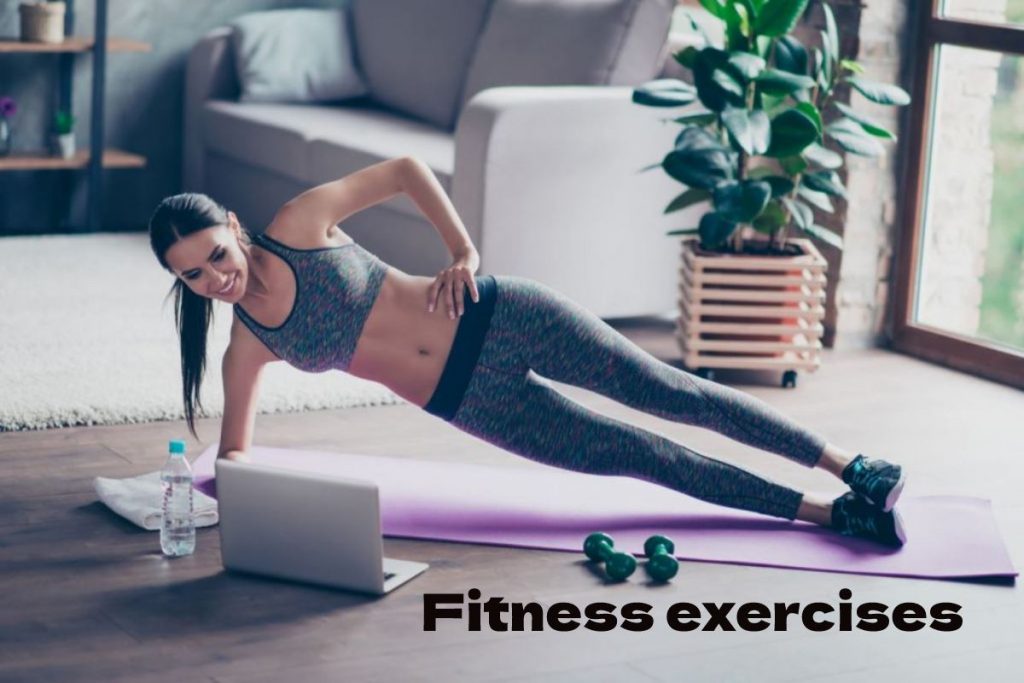Table of Contents
Fitness exercises: are they right for you?
Fitness exercises train your muscles to help you carry out your daily activities safely and effectively. Learn more about fitness exercises — and what they can do for you.
You probably don’t exercise. For many people, sport is a way to maintain or improve their quality of life. It is the area of fitness focus.
Fitness workouts are designed to train and develop your muscles to make everyday activities more accessible and safer.
Such as carrying grocery purchases or playing basketball with your kids.
What are Functional Fitness Exercises?
Functional fitness exercises train muscles to work together and prepare for everyday tasks by simulating joint movements you may perform at home, at work, or while exercising. While using different powers in both the upper and lower parts, functional fitness exercises emphasize the stability of the torso.
For example, squatting is a functional exercise because it trains the muscles used while climbing and landing from the chair or picking up low objects.
By training muscles to work the way they perform daily tasks, the body is equipped to perform well in various everyday situations.
Functional fitness exercises are conducting at home or in the gym.
For example, you can use resistance strips or dumbbells at home or do bodyweight movements such as compression exercises, plank, and squats.
Gyms may offer fitness classes. Or they can integrate functional fitness into boot camps or other class types.
It may include high-intensity functional exercises, performing a variety of high-intensity functional movements. Activities may consist of aerobic exercise, bodyweight movements, and weight lifting. Exercise tools, such as balls, weight balls, blocks and bells (iron ball blocks), and weights are commonly used in functional fitness exercises.
What are the Benefits of Functional Fitness Exercises?
Functional exercises tend to use multiple joints and several muscles. Instead of just moving elbows, for example, practical exercises may involve elbows, shoulders, spines, hips, knees, and ankles.
If properly exercised, this exercise can make daily activities easier, help reduce the risk of injury and improve quality of life.
Exercise training can be instrumental as part of a comprehensive program for seniors to improve balance, agility, strengthen muscles.
And also reduces the risk of falls.
What are the Examples of Functional Fitness Exercises?
Comprehensive physical movements involved in activities such as tai chi and yoga involve various resistance and flexibility exercises that can help build functional fitness.
Other examples of specific functional fitness movements that use multiple joints and muscles include:
Multi-directional rush exercises
Rowing in a stand-up position
Squat exercises
Multi-directional impulse exercises help prepare the body for everyday activities, such as vacuum cleaner cleaning and gardening. To practice the rush, hold one leg in position and move the other leg forward, back or side until the knee reaches a 90-degree angle and the rear knee parallel to the ground.
Are Functional Fitness Exercises Suitable for Everyone?
If you haven’t been exercising for a while or have health problems, it’s best to consult with your doctor before starting any new sports program. Similarly, if you are pregnant, consult your doctor. Moderate activity is generally safe during pregnancy if you are healthy, but your doctor can evaluate best for you.
It’s good to start with bodyweight exercises. As you become more fit and ready for more challenges, you can add more resistance, such as weights or resistance strips.
But be sure not to add much resistance to exercises that require significant impact.
This puts joints and soft tissues at greater risk if these exercises are not performed optimally. Making movements in water is a minimally effective way to achieve exercise results.
Functional Fitness Result
the more exercise you add to your workout, the better you’ll see an improvement in your ability to perform daily activities and your quality of life. It is a good return on investment in exercise.


